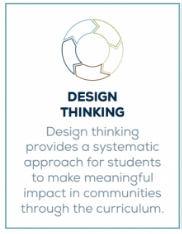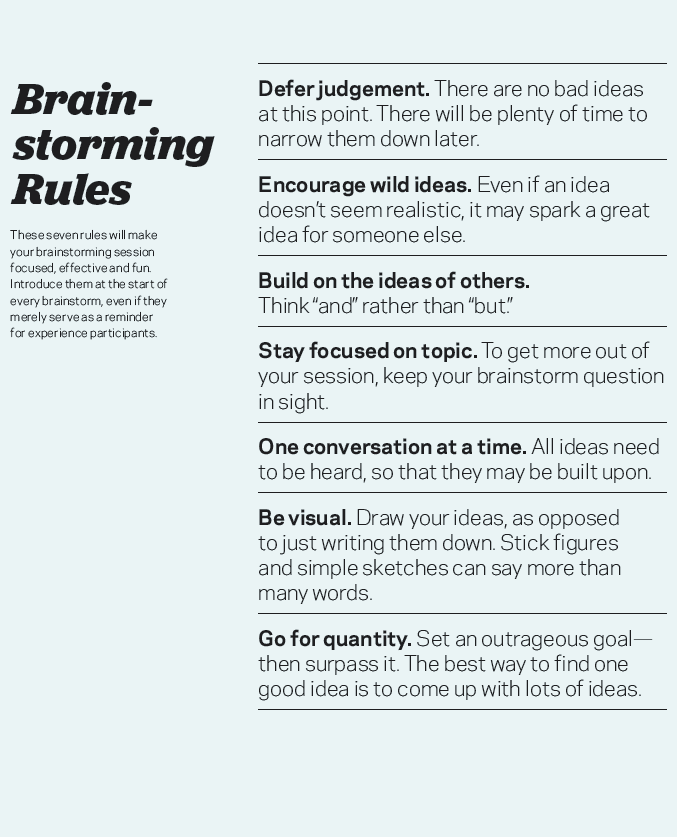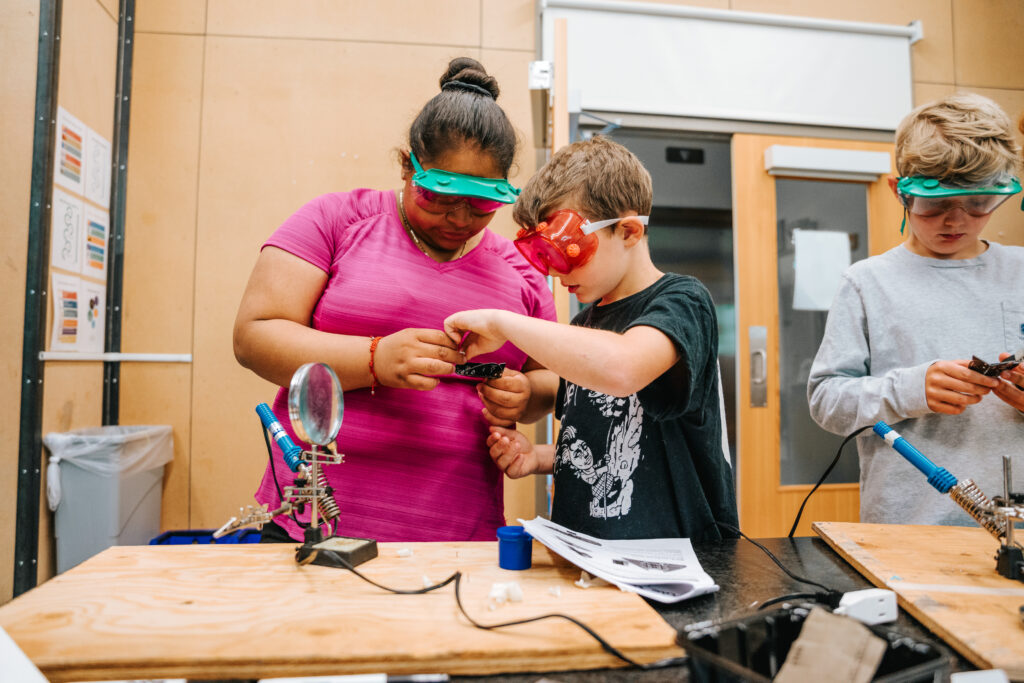The world faces design hurdles every single day. Whether it’s our most prestigious scientists and politicians understanding how our global economies can curb climate change, our local civil engineers figuring out how to design a new development in town or even our own school administrators dealing with challenging pick-up and drop-off processes, challenges are everywhere. They are real, complex and varied, and wherever they fall on the spectrum of scale, they require new perspectives, new tools, new approaches and an optimism that they can be solved (source).
Design Thinking is one of those approaches and here at Teton Science Schools, it’s a core element in our approach to place-based education.
What is Design Thinking?
Albert Einstein famously said, “We can’t solve problems by using the same kind of thinking we used when we created them.” New solutions require innovation and an evolution in our thinking.

Put simply, Design Thinking is a mindset; it’s about believing we can make a difference, and having a systematic approach in order to get new, relevant solutions that create meaningful impact in our communities, regions and the world around us. Within the context of place-based education — where students’ learning experiences match the complexities of the real world and are taught through an integrated, interdisciplinary, and often project-based approach — Design Thinking gives students an intentional platform to connect their curriculum to real-world challenges, opportunities and connections.
An excerpt from Design Thinking for Educators describes the approach as:
-
-
- Human-Centered: Design thinking begins from deep empathy and understanding of needs and motivations of people
- Collaborative: Several great minds are always stronger when solving a challenge than just one. Design Thinking benefits greatly from the views of multiple perspectives, and others’ creativity bolstering our own.
- Optimistic: Design Thinking is the fundamental belief that we all can create change — no matter how big a problem, how little time or how small a budget. No matter what constraints exist around us, designing can be an enjoyable process.
- Experimental: Design Thinking gives us permission to fail and to learn from our mistakes, because we come up with new ideas, get feedback on them, then iterate.
-
In short, Design Thinking is about believing that innovation is possible and that we have the power to make it happen. Problems = Opportunities for design.
Why is it important?
Design Thinking in education supports teachers in broadening the process of traditional learning, by encouraging students’ creativity, problem-solving, and critical thinking (Kewk, 2011). Through Design Thinking, students work within the curriculum to solve problems and improve issues that impact their communities; the structure and process serve as a form of social technology, requiring students to engage “creative confidence,” empathy and critical thinking, and supporting them to organize their thinking to make decisions.
Putting it into practice
The design process is what puts Design Thinking into action. It’s a systematic approach to generating new ideas and making meaningful impact. It has four phases that help students from identifying a problem to generating and creating a solution:
Phase 1 | Discover & Define
Every design process begins with a specific and intentional problem to address; this is called the design challenge. It should be approachable, understandable, actionable and clearly scoped. In this phase students will move through steps that might include: understanding the challenge, preparing research, gathering inspiration, listening and empathizing, telling stories, searching for meaning and creating an opportunity statement.
Phase 2 | Generate Ideas
Once students have created an opportunity statement, it’s time to generate ideas…lots of them! During this phase of ideation, students are encouraged to think expansively and without constraints. Here, brainstorming sessions can yield hundreds of fresh ideas. While this type of activity can often be considered wild and unstructured, it can often spark the most visionary solutions when facilitated carefully and with a clear set of rules. Once the brainstorming session has wrapped, students will select the most promising ideas — those that generate the most excitement from the group — through a vote and expand the selected ideas through simple representations such as sketches or storyboards.

Phase 3 | Create
With a few select ideas in hand, students are ready to bring them to life through prototypes. There are many different ways to prototype including: mock-ups, modeling, diagrams, direct interactions, and role-playing. Building minimum viable prototypes allows students to make their ideas tangible, gain valuable feedback from other people and learn through iterating.
Phase 4 | Evaluate & Evolve
In order to reach the full potential of new solutions and designs, students must share their ideas with audiences outside of their core design team — this could be other students and teachers within the school, members of the community or even experts in the field. With new learnings, students can return to the earlier steps in the design process — define, generate ideas or create — to refine and evolve their solution. Once a final solution has been tested and refined, students are ready to move forward in engaging others, building partnerships and sharing their story.

Need some inspiration?
Check out these projects from students here at Mountain Academy and across the country at our Place Network partners schools.
A Missouri teacher turned her holiday wish of having a beehive in her yard into a buzzing community impact project that had students doing research, conversing with bee experts, experimenting in design and participating in hands-on construction and prototyping.
Building off a previous exploration into “play”, students at Mountain River School were challenged to design a play space for the youngest members of their school. Teachers guide students through the entire design process to finally bring the space to life!
Check out more student projects here
At the end of the day, Design Thinking is the mindset that everyone can go out and create a more desirable future, and a process to flex our creative confidence and innovate for meaningful impact. It’s human-centered, collaborative, experimental and optimistic and that is exactly what we need in our classrooms, our communities and the world around us.
Further resources
Document Resources:
- Design Thinking for Social Change: primer on why and how Design Thinking works
- D.School Boot Camp Tool Box: tools to help implement Design Thinking with students
- Equity Centered Design: additions to the Design Thinking Process to include equity approaches
Video Resources:
- Meadowbrook School**
- How Design Thinking Can Empower Young People
- Design Thinking: A Problem Solving Framework
Research Support:


